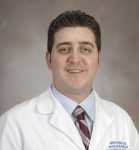Author Interviews, Columbia, Nutrition / 04.03.2019
New York Trans Fat Policy Linked to Reduction of Fatty Acids in Adults by 50%
MedicalResearch.com Interview with:
Sonia Y. Angell, MD MPH
Division of General Medicine
Department of Medicine, Columbia University Irving Medical Center
New York, NY
MedicalResearch.com: What is the background for this study? What are the main findings?
Response: Trans fatty acid in the diet increases the incidence of coronary heart disease in the population. In 2006, a policy restricting restaurant use of trans fat went into effect in NYC. This study measured the change in trans fatty acid serum concentration among a representative sample of the NYC population between 2004 and 2013-2014, and whether the change varied by frequency of restaurant food dining.
Overall, blood trans fatty acid serum concentration went down by 57%. Among people who dined out less than one time a week, it went down 51% and in those who dined out 4 or more times a week, it went down 61.6%. In fact, in 2013-2014 there was no longer a significant increase in the serum trans fatty acid concentrations among those who ate restaurant foods frequently compared with those who ate out rarely. (more…)





























